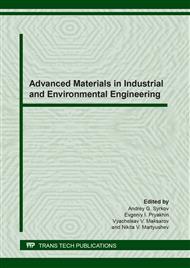p.140
p.151
p.158
p.164
p.175
p.182
p.188
p.194
p.200
Analysis of the Effect of Nanosilicates on the Strength and Porosity of Cement Stone
Abstract:
The paper deals with well cementing, which is a complex engineering task requiring special tools and technologies. The authors give an example of complications that arise due to the poor quality of well cementing. The aim of the work is to study the mineral ultrafine additive-nanosilicates, which increase the strength of cement stone and reduce its porosity. Nanosilicate is formed during the cleaning of ore-thermal furnaces in metallurgical plants. One of such technologies is application of metallurgical waste, since it can improve the environment by cleaning the sludge fields from waste and reduce the cost of cement slurry by reducing the amount of cement in the composition. The study provides practical data showing that nanosilicates positively affect the strength of cement stone, reducing its porosity.
Info:
Periodical:
Pages:
175-181
Citation:
Online since:
July 2020
Authors:
Keywords:
Price:
Сopyright:
© 2020 Trans Tech Publications Ltd. All Rights Reserved
Share:
Citation:


